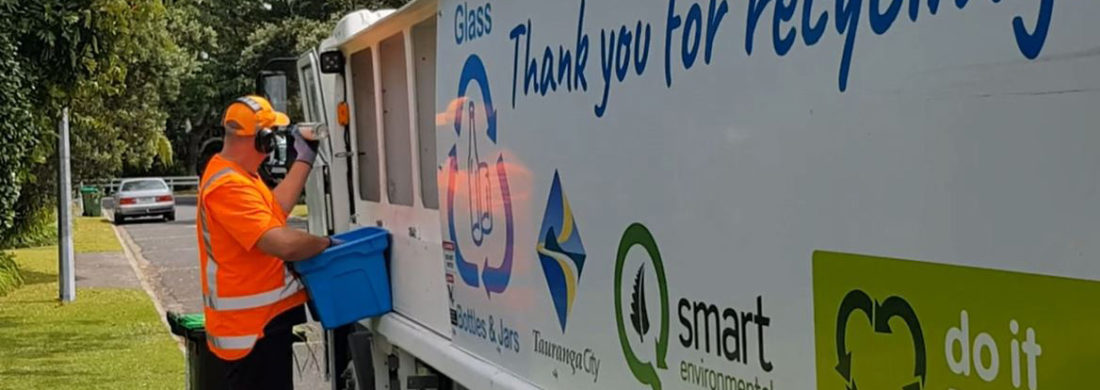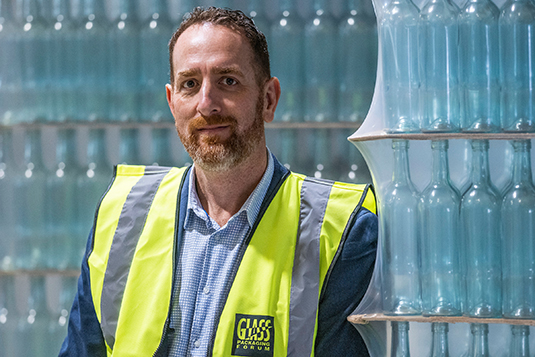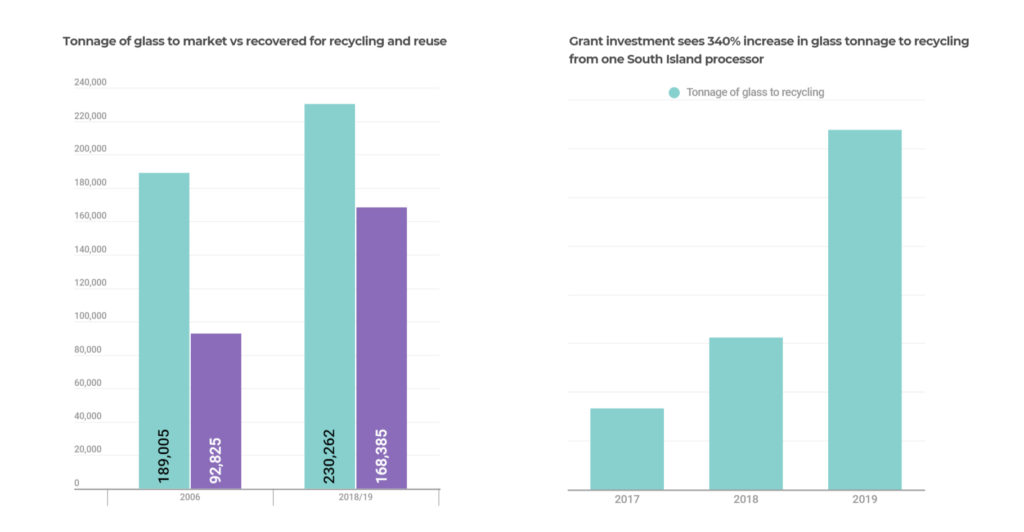
The Kiwi Bottle Drive accusation of “vested interests” disappointing – GPF

The Glass Packaging Forum is disappointed but unsurprised to see the Kiwi Bottle Drive attacking the Glass Packaging Forum’s record on improving glass recycling in New Zealand.
Since the GPF was formed in 2006, there has been a 28% increase in tonnage of container glass going to market and a 58% increase in glass tonnage recovered. “That’s a massive improvement by anyone’s measure,” says GPF Scheme Manager Dominic Salmon.
“As a voluntary organisation, we have had limited access to verifiable data on glass to market,” he says. “However, as we have consistently used the methodology under which our scheme was accredited by the Ministry for the Environment, and as far as we’re concerned, that graph is certainly going in the right direction.”
The GPF supports improved data capture and is currently looking at who it can work with to obtain a more robust data set that all interested parties can agree to refer to.
The Kiwi Bottle Drive is correct in claiming the 73% recovery rate includes glass that goes to alternative uses as well to bottle-to-bottle recycling. The main reasons some glass can’t be recycled back into bottles and jars are; contamination due to glass being collected together with other recyclables, and inefficiencies in infrastructure. “What we can measure we can change,” Dominic says. “Our focus has been on investment to improve the quality and quantity of glass collected.”

Ninety-seven percent of Kiwis have access to kerbside recycling or drop off facilities, and The GPF has been highly influential and effective in increasing the number of councils that are moving to glass separate collection and therefore reducing contamination, he says. “By our count the number of councils collecting glass separately has doubled from 15 in 2016/17 to 32 in May this year.”
This reduces contamination and increases the percentage of glass that goes back to the furnace. “In fact, we’re delighted to see the release by the Ministry for the Environment yesterday of a report that recommends incentivising glass being collected separately at kerbside as one of four key recommendations. We see this as a vindication of our work in this area.”
Investment by the GPF in practical infrastructure has also seen marked reduction in South Island glass that was previously going to landfill, Dominic says. “Our grant investment in a hub and spoke model has seen one processor alone increase the volume of glass they have sent to New Zealand’s only glass manufacturer by 340% over two calendar years. They are now able to take glass from additional local authorities which were previously sending their glass to landfill. This is big win for Mainlanders.”
Contrary to The Kiwi Bottle Drive’s insinuation, The GPF is fully supportive of Government requiring New Zealand to develop regulated product stewardship for glass, he says. This sees the cost of improving environmental outcomes shifted from councils to producers and consumers of a product, and all producers are compelled to contribute.
What the most effective (and cost effective) model of product stewardship is for New Zealand where Ninety-seven percent of Kiwis already have access to kerbside recycling and drop off centres needs further discussion.


